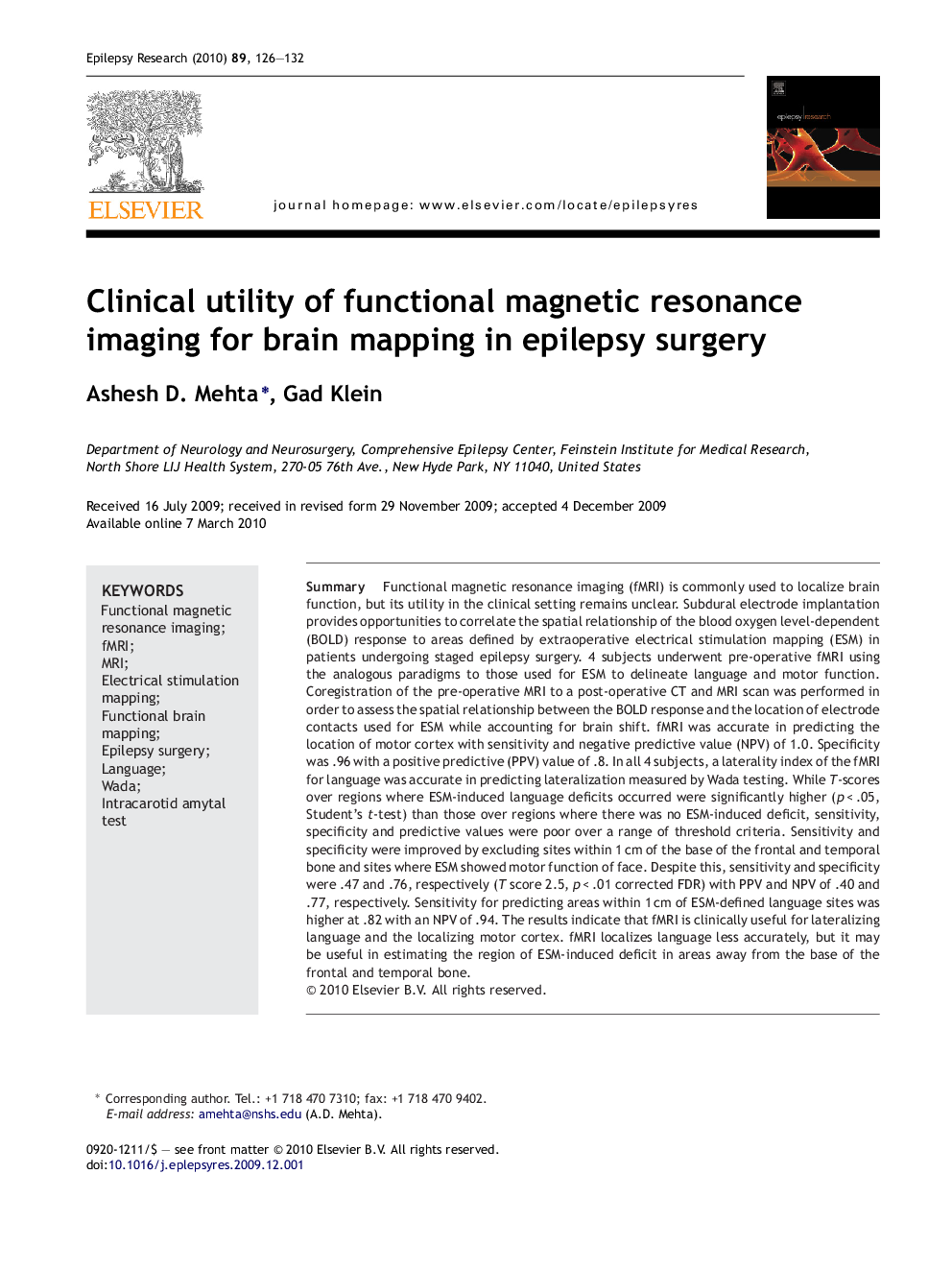| Article ID | Journal | Published Year | Pages | File Type |
|---|---|---|---|---|
| 3052728 | Epilepsy Research | 2010 | 7 Pages |
SummaryFunctional magnetic resonance imaging (fMRI) is commonly used to localize brain function, but its utility in the clinical setting remains unclear. Subdural electrode implantation provides opportunities to correlate the spatial relationship of the blood oxygen level-dependent (BOLD) response to areas defined by extraoperative electrical stimulation mapping (ESM) in patients undergoing staged epilepsy surgery. 4 subjects underwent pre-operative fMRI using the analogous paradigms to those used for ESM to delineate language and motor function. Coregistration of the pre-operative MRI to a post-operative CT and MRI scan was performed in order to assess the spatial relationship between the BOLD response and the location of electrode contacts used for ESM while accounting for brain shift. fMRI was accurate in predicting the location of motor cortex with sensitivity and negative predictive value (NPV) of 1.0. Specificity was .96 with a positive predictive (PPV) value of .8. In all 4 subjects, a laterality index of the fMRI for language was accurate in predicting lateralization measured by Wada testing. While T-scores over regions where ESM-induced language deficits occurred were significantly higher (p < .05, Student's t-test) than those over regions where there was no ESM-induced deficit, sensitivity, specificity and predictive values were poor over a range of threshold criteria. Sensitivity and specificity were improved by excluding sites within 1 cm of the base of the frontal and temporal bone and sites where ESM showed motor function of face. Despite this, sensitivity and specificity were .47 and .76, respectively (T score 2.5, p < .01 corrected FDR) with PPV and NPV of .40 and .77, respectively. Sensitivity for predicting areas within 1 cm of ESM-defined language sites was higher at .82 with an NPV of .94. The results indicate that fMRI is clinically useful for lateralizing language and the localizing motor cortex. fMRI localizes language less accurately, but it may be useful in estimating the region of ESM-induced deficit in areas away from the base of the frontal and temporal bone.
